Abstract
Viruses that cause persistent infections maintain themselves more effectively in nature than those causing acute and limited infections. There is a tendency for persistent viruses to evolve towards a state of minimal pathogenicity in the host. Vertical transmission, with integration of viral into host genome, represents the state of perfect parasitism.
Full text
PDF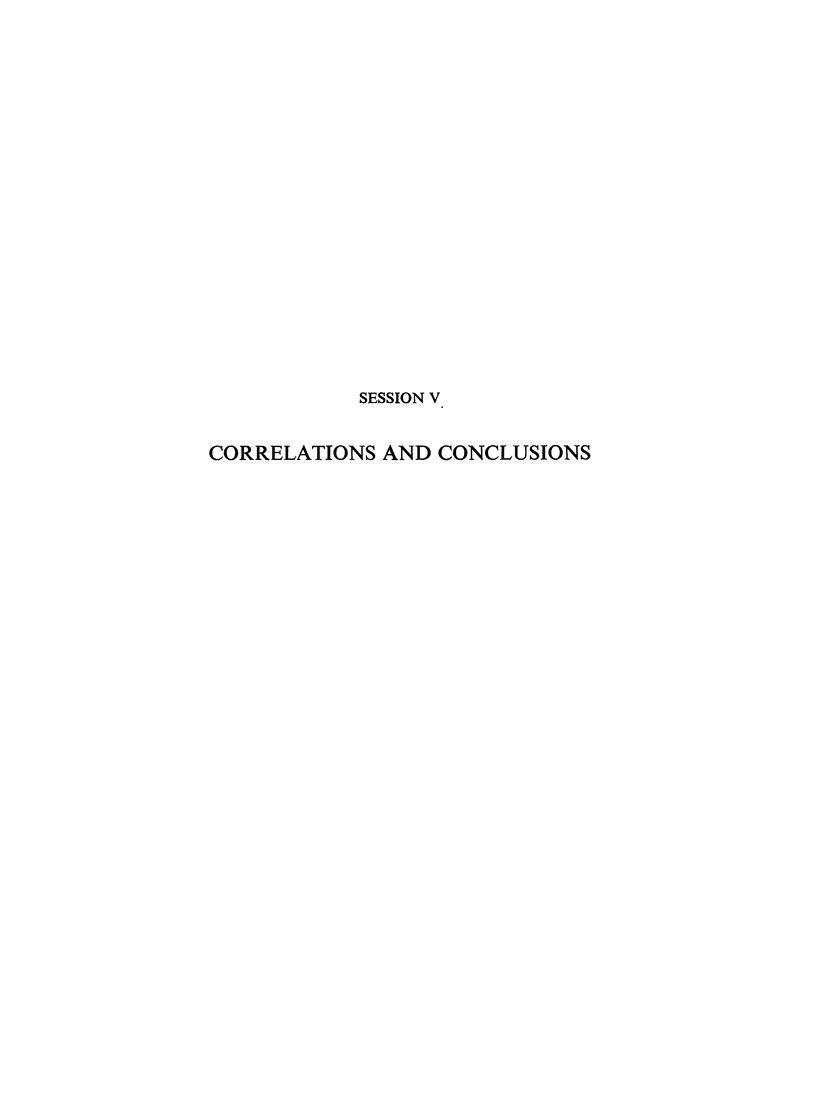
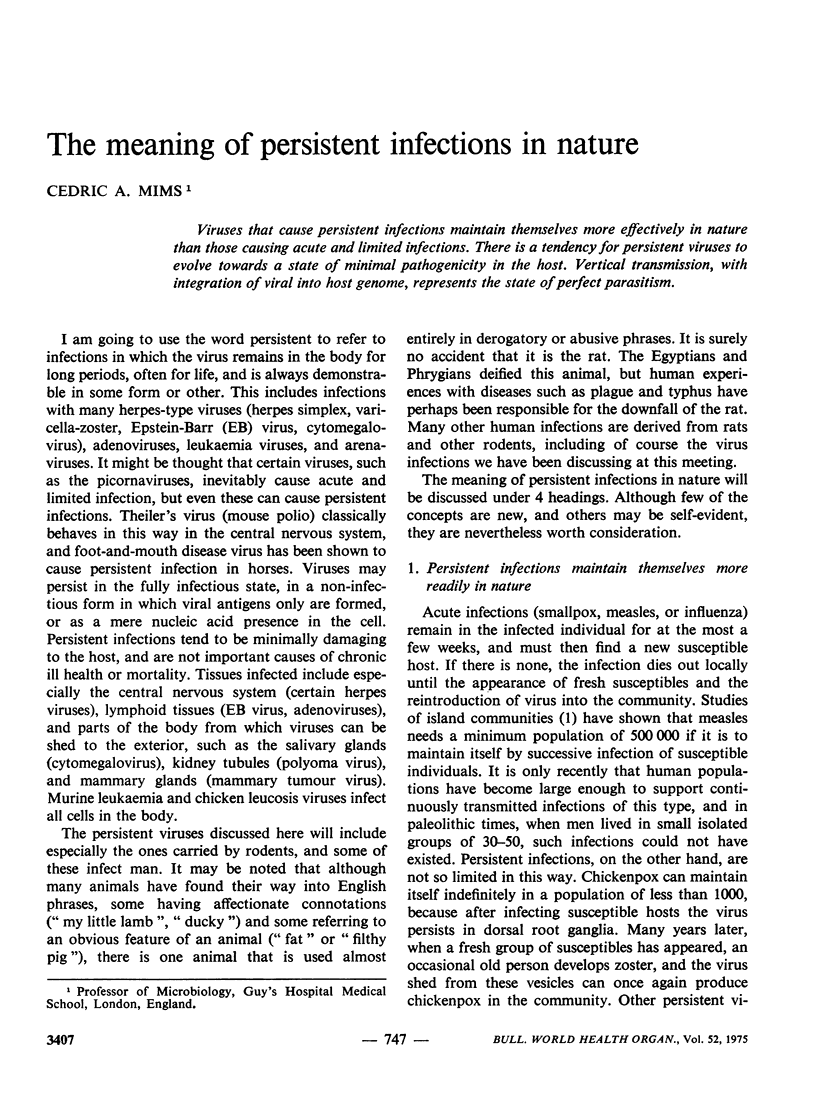
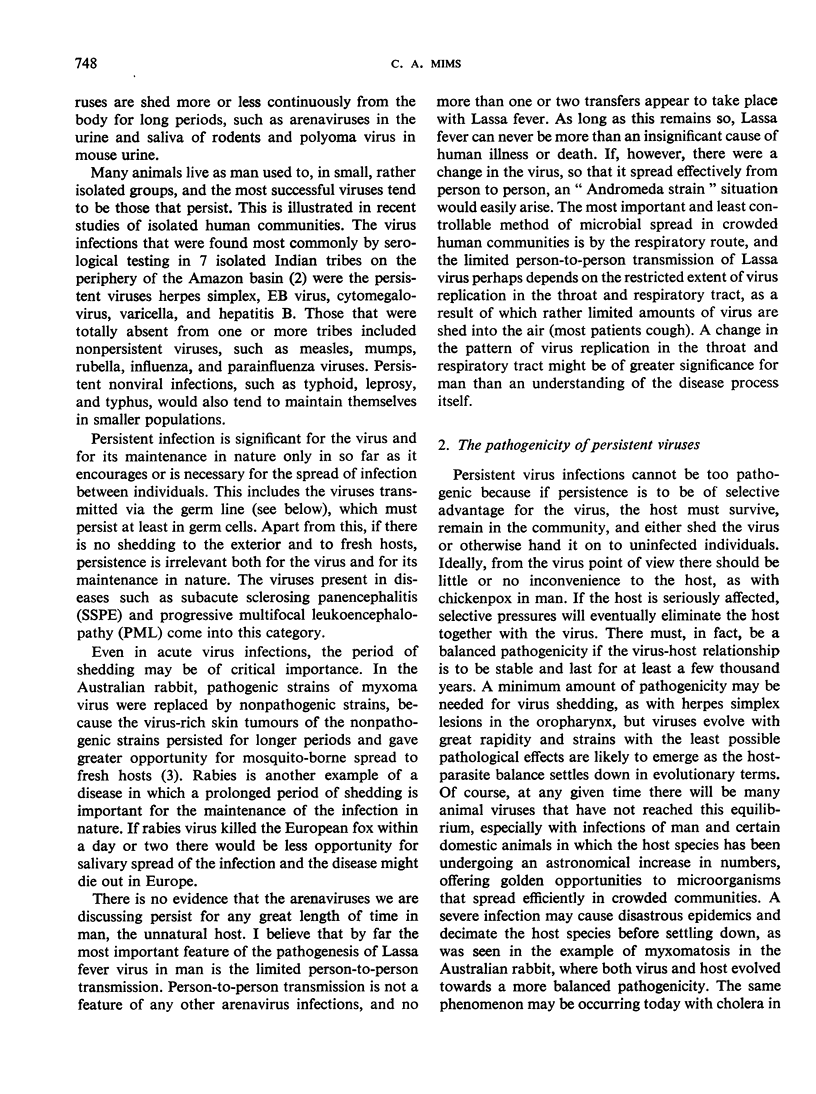
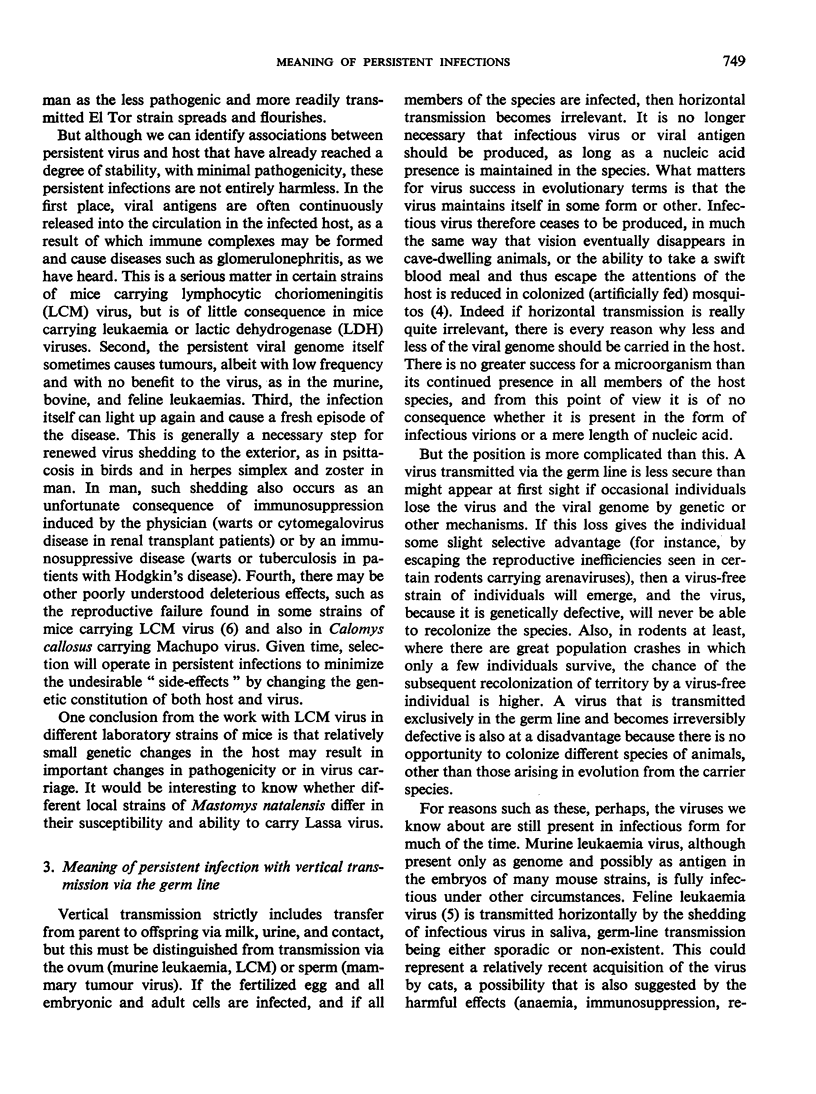
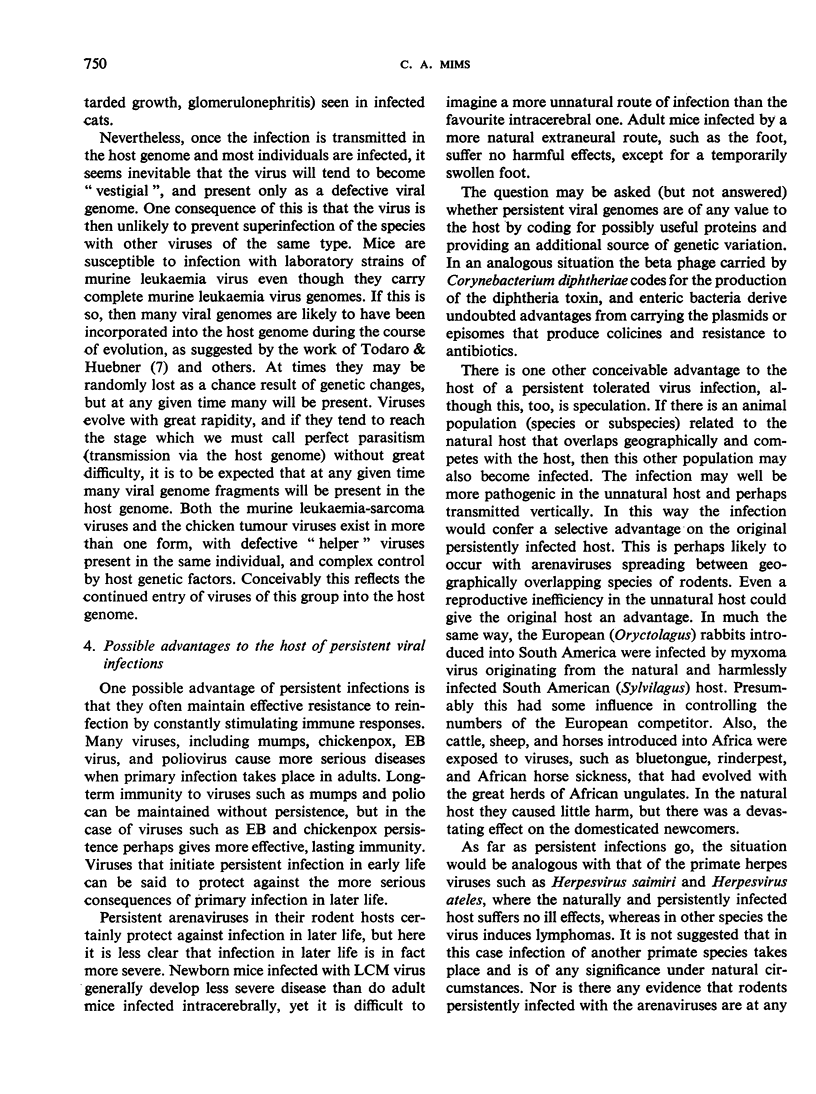
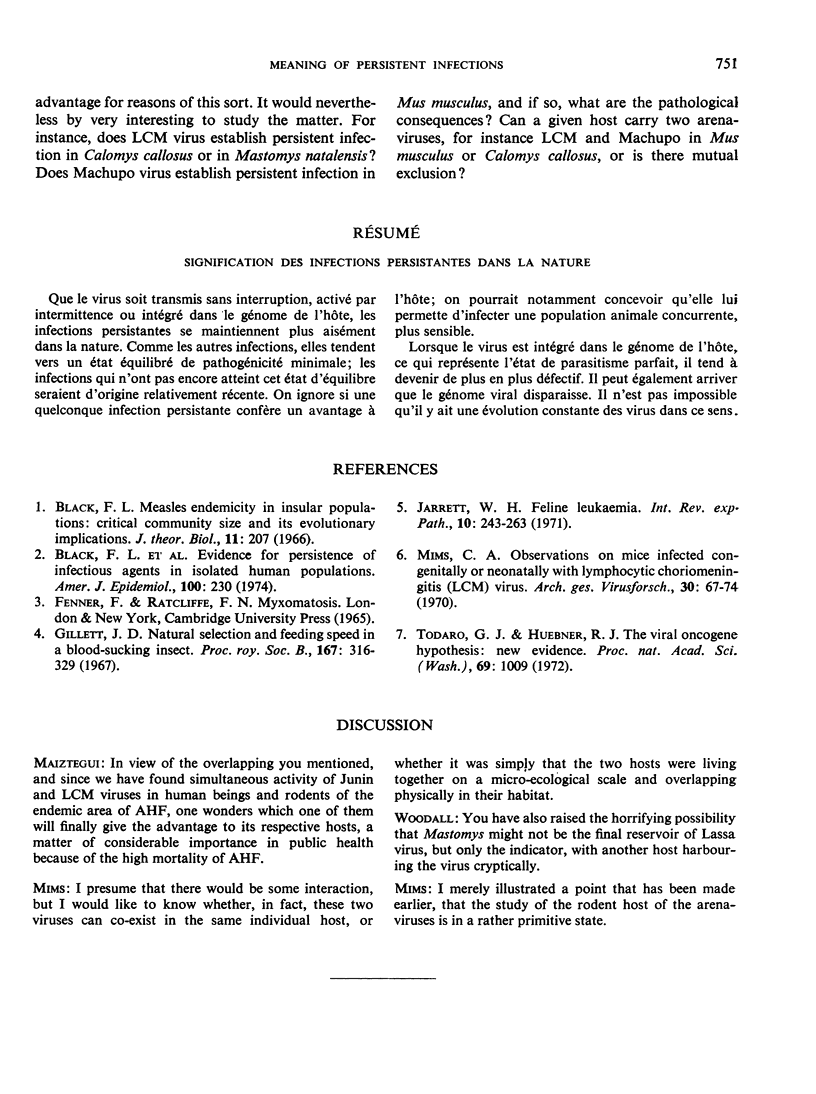
Selected References
These references are in PubMed. This may not be the complete list of references from this article.
- Black F. L., Hierholzer W. J., Pinheiro F., Evans A. S., Woodall J. P., Opton E. M., Emmons J. E., West B. S., Edsall G., Downs W. G. Evidence for persistence of infectious agents in isolated human populations. Am J Epidemiol. 1974 Sep;100(3):230–250. doi: 10.1093/oxfordjournals.aje.a112032. [DOI] [PubMed] [Google Scholar]
- Black F. L. Measles endemicity in insular populations: critical community size and its evolutionary implication. J Theor Biol. 1966 Jul;11(2):207–211. doi: 10.1016/0022-5193(66)90161-5. [DOI] [PubMed] [Google Scholar]
- Gillett J. D. Natural selection and feeding speed in a blood-sucking insect. Proc R Soc Lond B Biol Sci. 1967 Mar 28;167(1008):316–329. doi: 10.1098/rspb.1967.0029. [DOI] [PubMed] [Google Scholar]
- Jarrett W. F. Feline leukemia. Int Rev Exp Pathol. 1971;10:243–263. [PubMed] [Google Scholar]
- Todaro G. J., Huebner R. J. N.A.S. symposium: new evidence as the basis for increased efforts in cancer research. Proc Natl Acad Sci U S A. 1972 Apr;69(4):1009–1015. doi: 10.1073/pnas.69.4.1009. [DOI] [PMC free article] [PubMed] [Google Scholar]


